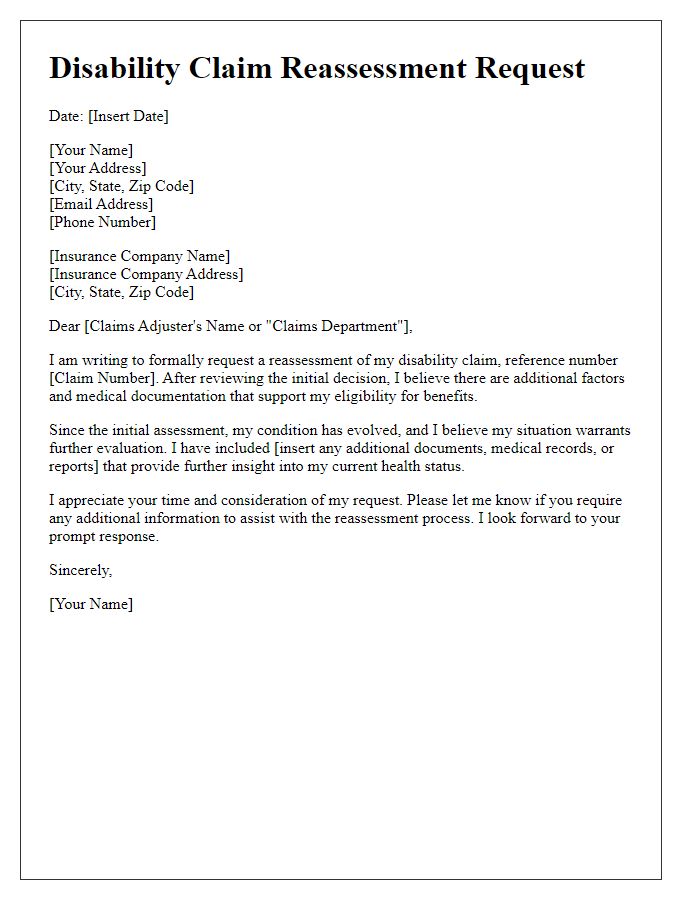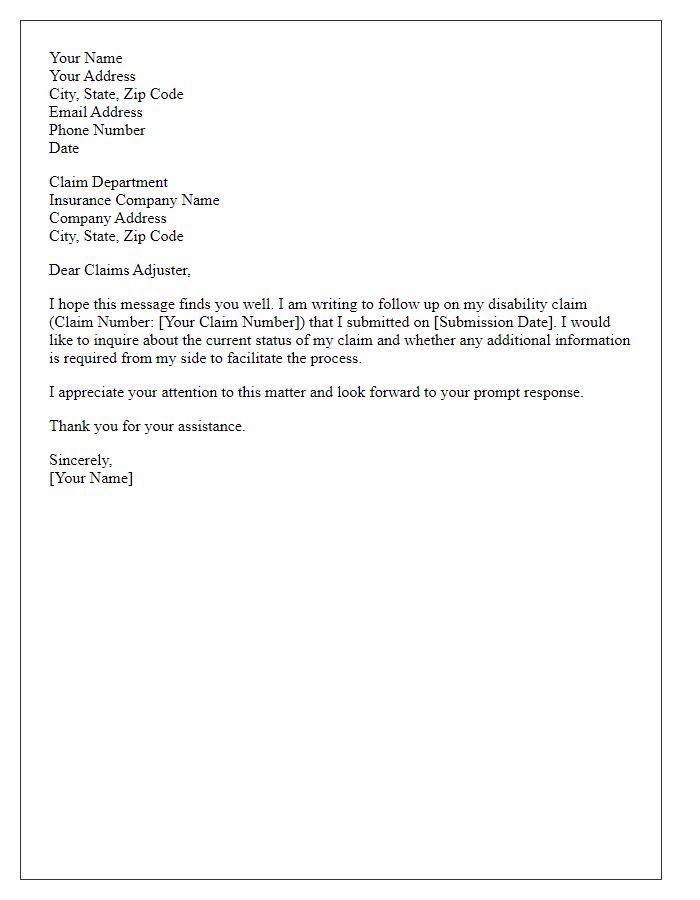Applying for disability benefits can often feel overwhelming, but having the right letter template can simplify the process significantly. With the right structure and language, you can clearly convey your needs and increase your chances of a successful claim. This article will guide you through creating a compelling letter that resonates with decision-makers. So, let's dive in and explore essential tips and templates to help you craft the perfect claim letter!

Clear identification of claimant information
A clear identification of claimant information includes essential personal details such as the full name of the claimant (for example, John Doe), date of birth (e.g., June 15, 1985), Social Security number (e.g., 123-45-6789), mailing address (e.g., 123 Main St, Springfield, IL), phone number (e.g., (555) 123-4567), and email address (e.g., johndoe@email.com). Additional identifiers such as the case number assigned by the disability agency (e.g., Case #987654321) and the date of the claim submission (e.g., February 10, 2023) should also be included to facilitate efficient processing and tracking. Detailed medical history may further enhance identification, providing context for the disability claim, and corroborating the effects of the disabilities on daily functioning.
Detailed description of disability condition
A detailed description of a disability condition is essential for processing a disability claim effectively. For instance, individuals with conditions like Multiple Sclerosis (MS) often experience a range of debilitating symptoms such as muscle weakness, fatigue, and impaired coordination. These symptoms can significantly impact daily functioning, making simple tasks like walking or lifting objects challenging or impossible. Additionally, cognitive symptoms, including memory loss or difficulties with attention, may further complicate work and everyday activities. The fluctuating nature of MS symptoms, which can vary from mild to severe episodes, adds another layer of complexity to managing the condition. For individuals, the ability to maintain employment can be severely hampered, especially in physically demanding occupations or jobs that require prolonged concentration. Moreover, the need for regular medical appointments and potential assistive devices, such as wheelchairs or mobility aids, may further illustrate the extent of the condition's impact on one's quality of life and capacity for gainful employment.
Comprehensive medical evidence and documentation
Comprehensive medical evidence and documentation play a critical role in the processing of disability claims, particularly in agencies such as the Social Security Administration in the United States. Detailed reports from healthcare professionals, including specialists like neurologists or orthopedic surgeons, provide essential insights into the severity of a claimant's condition, which may encompass chronic illnesses or physical disabilities. For instance, diagnostic tests, such as MRI scans or blood work results, help substantiate the medical condition's impact on daily functioning. Accurate records of treatment history, including medications prescribed (like anti-inflammatory drugs) and therapy sessions, are indispensable in establishing the ongoing nature of the impairment. Furthermore, clinical notes outlining the patient's limitations in performing work-related tasks or activities of daily living can strengthen the claim substantially. It is vital to ensure that all documentation aligns with the specific criteria outlined by relevant disability regulations, thereby enhancing the likelihood of a successful evaluation.
Compliance with legal and policy requirements
Disability claims processing requires strict adherence to legal statutes and organizational policies outlined in the Americans with Disabilities Act (ADA). Documentation must provide detailed medical evidence from licensed healthcare professionals indicating the severity of the disability, which may include physical impairments like mobility issues and mental health conditions such as PTSD. Clear communication with the Social Security Administration (SSA) is essential, adhering to their guidelines for submission that includes the completion of specific forms, such as the SSA-16 for disability insurance benefits. Timeliness is critical; claim forms should be submitted within the stipulated 12-month period following the onset of the disability. Compliance with procedural requirements ensures that claims are processed efficiently and accurately, minimizing delays in receiving necessary support.
Concise and respectful tone throughout the correspondence
In the realm of disability claims processing, clarity and respect play crucial roles in communication. Each claimant should meticulously present information regarding their specific condition, ensuring to include precise data such as diagnosis dates, medical treatment records, and healthcare provider names (e.g., Dr. John Smith, Neurologist, at City Hospital). Additionally, the inclusion of relevant documentation, such as detailed medical notes, therapy attendance records, and psychological evaluations, contributes to a comprehensive understanding of the condition and its impact on day-to-day functioning. Stressing the importance of timeliness in processing these claims often reinforces the need for prompt action, particularly to address critical financial support during challenging periods. Attention to the rules and guidelines established by the Social Security Administration (SSA) ensures compliance and facilitates a smoother processing experience.













Comments